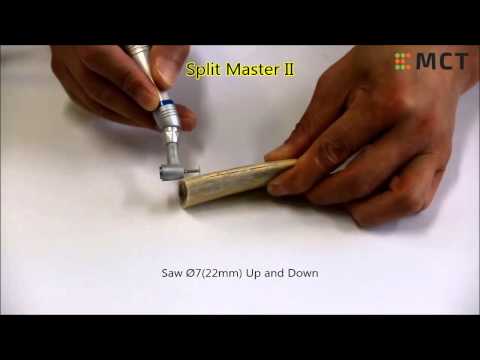The instructions below pertain to our Bone Expander and Ridge Splitting Kits, which are available as a combo kit in our Split Master Kit. Ridge splitting with bone expansion is a technique of manipulation of bone to form receptor site for implant without removing any bone from the implant site. Bone expander drills are an alternative to osteotomes for the expansion and condensing of the atrophic mandible and maxilla.
Bone Expander Instructions
- Make an initial hole with a pilot drill
- Expand the hole using the bone expander drill of choice. You can use the Ratchet Wrench(preferred) or a Low Speed Handpiece. Recommended speed is 15-20 RPM.
- Use the saw to control the opening
Ridge Splitting Instructions
- Split Ridge Bone lengthwise the desired length by using the saw.
- Make it deep enough for spreader by using split chisels
- Put in spreaders, suitable for length
- To expand bone gradually , screw spreaders little by little.


Instructional Video
Cleaning and Sterilization
Instrument Cleaning Please follow these cautionary cleaning instructions:
- Do not submerge in any solution
- Do not use ultrasonic devices
Needs to be cleaned and thoroughly dried before sterilized. Should be washed with a non-corrosive, low sudsing neutral detergent. Cleaning can be accomplished by automated cleaning, which is preferred to minimize the opportunity of sharps injuries due to hand scrubbing. Manufacturer does not suggest the use of any abrasive brushes or materials to clean.
Instrument Sterilization - Steam Autoclave This kit may be autoclaved. Follow the sterilizer manufacturer’s recommended procedure while observing the following cautions:
- 15 Minutes At 273 ̊F / 134 ̊C (15psi)
- Use Of Hard Water May Leave Deposits
- Do Not Use Closed Containers
- Dry at Least 10 Minutes
- Do not submerge in any solution
- Do not use ultrasonic devices
- Do not autoclave for extended periods of time (i.e. overnight). Extended autoclaving should not be confused with repeated autoclaving. Repeated autoclaving will not harm the product.

